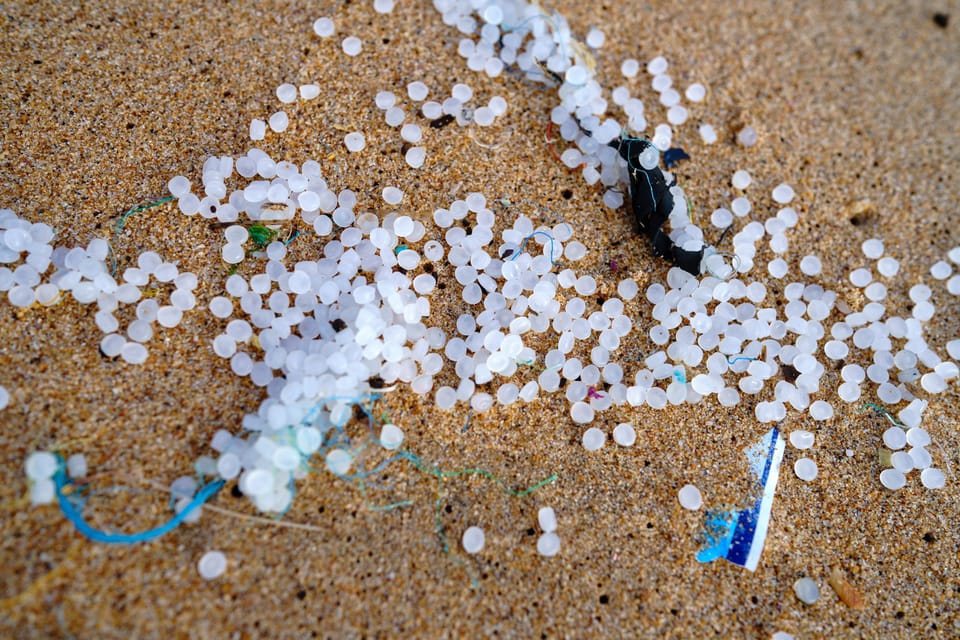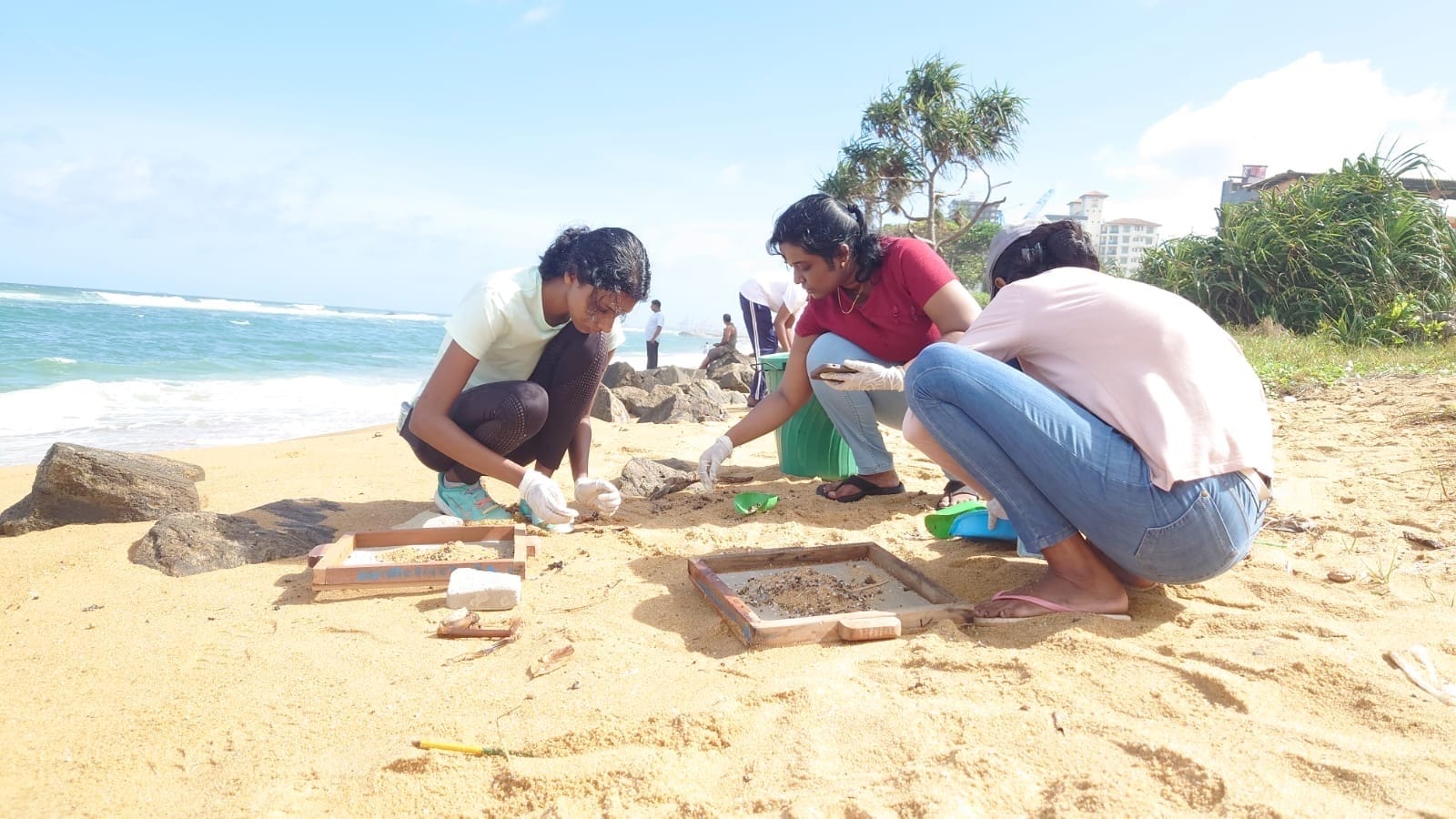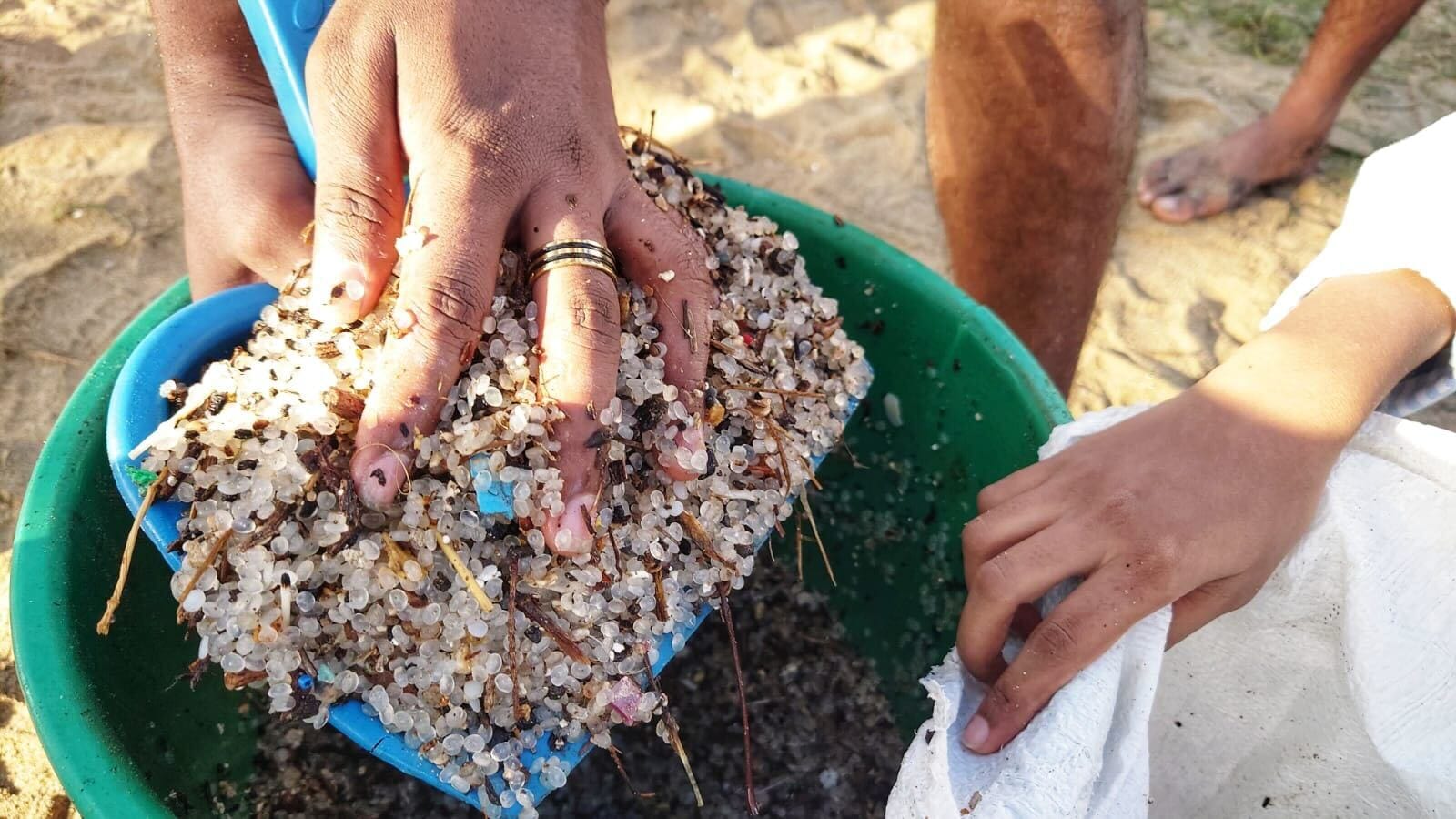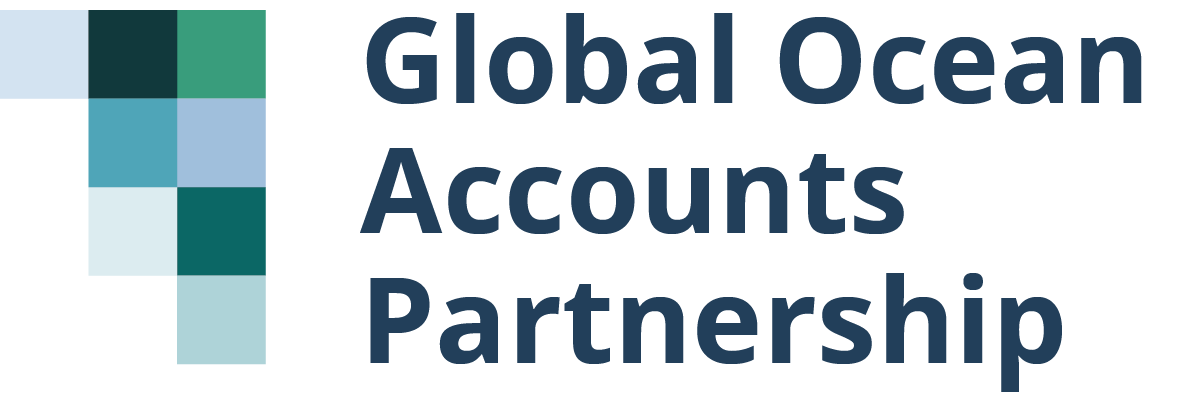Remediation of Plastic Pollution: Why Island Nations need stronger measures in the new plastics treaty

Authors: Randika Jayasinghe and Eliza Northrop
In 2021, the Indian Ocean witnessed its worst marine plastic disaster in history when the container ship , the MV X-Press Pearl accidentally caught fire and eventually sunk about 10 nautical miles off the coast of Sri Lanka. The MV X-Press Pearl was carrying containers of plastic pellets (or nurdles), typically 1-5 mm in diameter which are used to produce plastic products. After the incident, over 1,680 tons of plastic pellets were released in the environment and polluted 750 kilometres of shoreline in Sri Lanka. Fish, turtles and other sea animals died from ingesting pellets or related causes.

Just four years later, another container ship, the MSC ELSA3 spilled tons of pellets near Kerala, India, with pellets washing up on both Indian and Sri Lankan shores. These incidents underscore a critical gap in international governance regarding remediation of plastic pollution to support vulnerable island states that are disproportionately impacted by plastic pollution in the marine environment.
The high stakes for island nations
According to the 2023 report by the OECD titled Global Plastics Outlook: Policy Scenarios to 2060:
“International trade and transboundary movement of plastic waste contribute significantly to plastic pollution in coastal and island nations, with up to 65% of plastic waste found in these countries originating from external sources”.
The Asia-Pacific region accounts for nearly half of the world’s plastic pellet trade. This surge in regional plastic commerce, combined with increasing shipping traffic, creates a challenge for island nations that often lack the resources and expertise to respond effectively to major spills if an accident occurs.
Sri Lanka’s location along strategic shipping routes makes it particularly vulnerable to marine pollution. The cleanup activities of the X-Press pearl accident revealed the technical complexity of marine plastic remediation - nurdles penetrate deep into sand layers, re-emerge with tidal movements, and fragment into microplastics that are impossible to remove completely. Despite extensive cleanup efforts involving thousands of naval personnel, coast guards, and volunteers, nurdle contamination persists along Sri Lanka’s coastline four years later.


Four years after the X-Press Pearl disaster, volunteer groups like the Pearl Protectors continue their cleanup efforts, manually removing plastic nurdles still buried deep in Sri Lankan beaches. Photograph: The Pearl Protectors
The X-Press Pearl disaster’s impact was so severe that Supreme court of Sri Lanka ordered the company to pay $1 billion in damages for violating several fundamental rights under the Sri Lankan Constitution. The Court found violations of Article 12(1) (Right to Equality) when the Attorney General filed compensation claims in Singapore rather than Sri Lankan courts, undermining national interests. It also found violations of Article 14(1)(g) (Freedom to engage in lawful occupation) due to the year-long fishing ban that deprived coastal communities of their livelihoods.
This decision highlights both the scale of harm and the challenges island nations face in dealing with the transboundary nature of plastic pollution.
Plastic pollution is not limited to accidental spills, ongoing plastic leakages feed major ocean gyres that concentrate plastic debris into massive accumulation zones. The Great Pacific Garbage Patch, the largest of five global accumulation zones located between Hawaii and California spans 1.6 million km² and contains approximately 79,000 metric tons of plastic. These gyres act as continuous sources of microplastic pollution for island nations, with ocean currents transporting fragmented debris across vast distances to coastal territories.
A new global treaty to address plastic pollution: Progress but gaps remain
184 countries are currently in Geneva, Switzerland with the aim to conclude negotiations for the world's first internationally binding agreement to end plastic pollution, including in the marine environment.
Paragraph 3c of UNEA Res 5/14 mandates the agreement to contain provisions “to promote national and international cooperative measures to reduce plastic pollution in the marine environment, including existing plastic pollution.”
For island nations--often referred to as big ocean states, based on the size of the marine environment under national jurisdiction (e.g. Pacific Island nations like Palau, which has an EEZ of 604,000 km² despite a land area of only 459 km²)--this agreement must include support and collective obligations to clean up the marine environment.
Existing plastic pollution in the marine environment represents a unique problem due to location, cost, interaction with other MEAs and presence of significant private actors. As a result of these unique challenges, remediation of plastic pollution requires cooperative and coordinated action.
Parties are currently negotiating provisions that could close this gap in ocean and pollution governance.
The first set of provisions deal with the issue of releases and leakages of plastic pollution. Draft text currently requires parties to “take measures to prevent, reduce, and, where possible, eliminate releases and leakages of plastic pellets, flakes and powders to the environment and aquatic systems.” This is a crucial first step, but prevention alone is not enough. The agreement also needs to provide measures to ensure remediation in the marine environment, both in national waters and in areas beyond national jurisdiction (the high seas).
The Alliance of Small Island Developing States has been calling for the creation of a dedicated remediation mechanism and associated funding to support global efforts to clean up existing plastic waste in the marine environment.
The path forward at INC 5.2
The negotiations are taking place now in Geneva. The negotiators must recognise that maritime plastic disasters are not rare accidents. They are predictable consequences of the extensive and escalating plastic trade through our oceans. The increasing frequency of these spills, including four of the world’s largest nurdle disasters in the Asia-Pacific region (including the 2011 MV Rena spill in New Zealand and 2012 Sinopec vessel spill in Hong Kong, each releasing 150 tons of nurdles), demands urgent action.
The treaty represents a unique opportunity to protect island nations that bear disproportionate impacts of marine plastic pollution, including from global plastic commerce. By establishing remediation mechanisms , ensuring polluter accountability, and building regional capacity, negotiators can transform the treaty to support the vulnerable nations better.
The billion-dollar judgment in Sri Lanka’s favour demonstrates that courts recognise the massive harm these disasters cause. Now it is time for the international community to prevent such harm in the first place and ensure rapid, effective response when prevention fails. Island nations should not have to face these crises alone.
